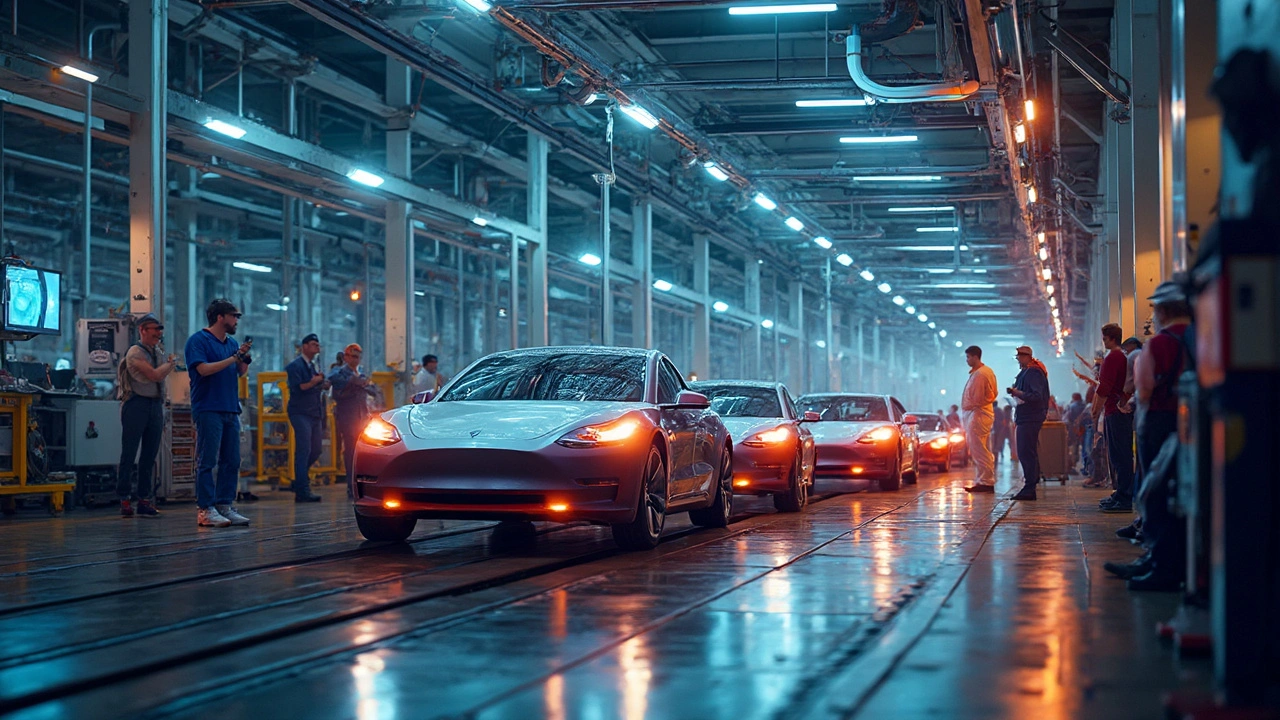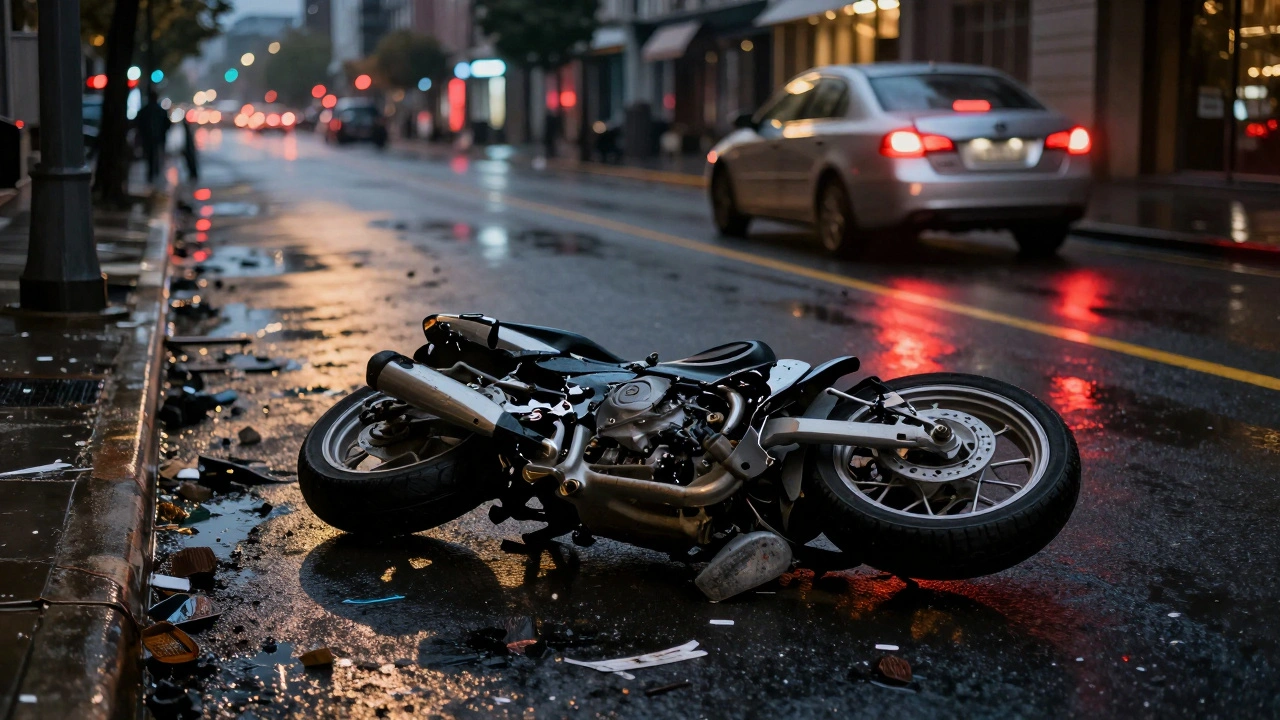If you’ve checked car prices lately or seen news about jobs at automakers, you know something’s up. The car industry isn’t just changing; it’s flipping the script. Factories that once made muscle cars in the Midwest are now pumping out electric SUVs in China, Mexico, and Hungary. Robots roll tires and install dashboards, while software engineers outnumber welders. The next time you ride in a new car, you might be sitting in a rolling computer partly made a thousand miles from Detroit. Let’s pull back the curtain on these massive shifts.
The Drive Toward Electric: Goodbye Gas, Hello Batteries
You can’t scroll through auto news without hearing about electric vehicles (EVs). Last year, electric cars made up almost 18% of global new car sales, up from just 4% in 2020. In the U.S., EV sales cracked the 1.2 million mark in 2024. Major automakers—Ford, GM, Volkswagen, Toyota—are racing to launch dozens of EV models, dropping billions of dollars on battery plants from Georgia to Bavaria.
What’s behind the EV rush? For starters, regulators are pushing hard. California plans to ban new gas-powered cars by 2035. The European Union’s got a similar target. Meanwhile, China, now the world’s largest vehicle market, is doubling down with subsidies and local battery giants like CATL and BYD.
Batteries are everything in this new race. Automakers used to sweat over horsepower stats; now they brag about charging times and miles per charge. Tesla set the tone, but Ford’s F-150 Lightning and Rivian’s R1T are bite-sized proof trucks can go electric, too. Here’s the thing: batteries are heavy, pricey, and depend on materials like lithium and cobalt. The price of lithium has shot up 350% since 2020, putting pressure on carmakers to secure supplies. Some are partnering directly with mining firms or investing in recycling. Ford, for example, announced in March 2025 a $7 billion deal to build a battery recycling plant in Texas.
Don’t expect every factory to flip a switch overnight. Building EVs requires different assembly lines—less moving parts, more electronics, and a crew that understands software better than axle grease. The upshot? Some old plants close, others get new life, and hiring shifts from welders to coders. That’s led to tough union talks and worries about jobs disappearing in traditional auto towns.
EV adoption also collides with the realities of charging. Europe now has one public charger for every seven EVs; the U.S. is playing catch-up, especially outside of big cities. Automakers are striking deals with charging networks to expand reach, but plenty of drivers still brake at the idea of hunting for a plug at midnight. If you own a house with a driveway, installing a home charger can be a game-changer—rebates are making it cheaper, and some electric utilities in New York and California offer bonus credits if you charge overnight.
| Year | Global EV Sales (Millions) | % of Total Car Sales |
|---|---|---|
| 2020 | 3.1 | 4% |
| 2022 | 7.8 | 10% |
| 2024 | 13.7 | 18% |
If you’re thinking of working in auto or buying an EV, it’s worth knowing this isn’t hype: the industry is doubling down for the long haul. The gas engine isn’t dead—yet—but the writing’s on the wall.
Robots on the Line: Automation Ups the Stakes
Step onto any big auto plant today and you’ll hear the hum of robots welding, painting, and even inspecting cars by laser. Automation isn’t just a future thing. Over 60% of new auto assembly tasks are now touched—or handled entirely—by machines. Toyota, BMW, and Hyundai all set robot density records in their factories last year. In fact, global statistics from the International Federation of Robotics put auto industry robot density at nearly 1,500 robots per 10,000 workers, more than triple any other industry.
It’s not just about cutting costs. Robots don’t get tired, make fewer mistakes, and can be reprogrammed overnight to build different models—key at a time when buyers want dozens of options. With automakers like Stellantis rolling out hybrid and electric plus traditional models, flexible lines make all the difference. Fanuc and ABB, the biggest robot suppliers, pump out increasingly smart bots. They learn processes from video, spot defects in real time, and even handle paint jobs that used to mean toxic fumes for workers.
This shift means fewer old-school assembly jobs, but it opens new roles. Robot operators, data analysts, and cybersecurity experts are now essential on the shop floor. GM retrained over 7,000 workers for automation roles in 2024 alone. Want to thrive in this new car world? Learn some digital skills—manufacturers are desperate for people who can bridge the gap between the production line and IT. Programming languages like Python or tools like Siemens PLCs can put you ahead of the pack.
Of course, not everything is smooth. Small parts suppliers, especially in regions like Michigan or northern Italy, feel the squeeze as orders for older components—like fuel injectors or manual transmissions—fall off a cliff. At the same time, startup suppliers making sensors, chips, or battery modules can’t hire fast enough. The parts world is splitting, and that means new business for some, but tough times for others.
On the quality front, automation has delivered cars with fewer defects per thousand vehicles. Tesla drew headlines in late 2024 when its Berlin factory hit a record: just 15 defects per 1,000 cars, compared to the industry average of 38. For buyers, that means new rides show up with fewer rattles and headaches down the line.
If you’re eyeing a career shift, check out the online training programs supported by companies like Ford and Toyota—you don’t need a four-year degree to get in the game. Certificate programs in robotics or mechatronics can launch you into $70,000+ jobs with just a year of study.

The Global Shuffle: Where Cars Are Made Is Shifting
The old map of car making—with Detroit, Stuttgart, and Nagoya at the center—doesn’t tell the story anymore. China now builds more cars than the U.S., Japan, and Germany combined. In 2024, China produced 30 million vehicles, nearly one-third of worldwide output. And while Chinese brands like BYD, Geely, and Nio make headlines, they’re often building for export—Europe and Latin America are seeing a flood of Chinese-made EVs and hybrids.
This is happening for two main reasons: cost and location. Labor costs in China, Mexico, and parts of Eastern Europe are much lower than in the U.S. or Western Europe. Plus, automakers like to build closer to where cars will be sold to dodge tariffs and shipping woes. That’s why you’ll find Ford’s new EV plant outside Cuautitlán, Mexico, and BMW’s battery assembly in Debrecen, Hungary. Tesla’s gigafactories in Shanghai and Berlin can flip production based on demand, giving buyers quicker delivery and automakers more flexibility.
Trade fights also shake things up. When the U.S. put new tariffs on Chinese EVs in early 2025, BYD and Chery fast-tracked deals to build assembly plants in Brazil and Indonesia—dodging tariffs and shortening supply lines. Meanwhile, automakers face the reality that shipping delays (remember the Suez Canal backup?) can leave $40,000 SUVs sitting on container ships for weeks. That’s pushing manufacturers, including Honda and Stellantis, to bring some work back home or closer to big markets. The fancy term is “nearshoring”—but really, it just means “build it where you sell it.”
This shuffle spells opportunity if you live near a growing factory town. Places like Spartanburg, South Carolina; Puebla, Mexico; and Debrecen, Hungary are booming, with auto industry jobs growing over 20% last year. On the flip side, traditional hubs like Detroit, Torino, or Sunderland are fighting to keep output steady, betting on new tech and government support to stay in the game. It’s a fast-moving chessboard, with billions in play and fortunes rising and falling almost overnight.
| Country | Vehicles Produced (2024) | Trend vs. 2019 |
|---|---|---|
| China | 30 million | +32% |
| US | 10.2 million | -3% |
| Germany | 4.3 million | -6% |
| Mexico | 4.6 million | +13% |
| Hungary | 0.7 million | +24% |
Thinking about a move or new career? Look up the biggest new auto factory projects in your area—these often come with hiring sprees, training, and big local investments. Governments everywhere offer incentives, too: look at Tennessee or Saxony for EV-friendly grants and job training programs.
Tech Behind the Wheel: Cars Are Turning Into Smart Devices
If you bought a car before 2015, its most advanced feature might’ve been Bluetooth. Now? Your fresh-off-the-lot Toyota or Mercedes can update its software overnight, steer itself down the highway, and even predict when you’ll need to buy new brake pads. Car companies aren’t just making automobile manufacturing moves—they’re turning cars into rolling tech hubs.
Let’s talk data: every new EV or hybrid is packed with sensors, chips, and lines of code—by 2025, each high-end car can contain over 100 million lines. That’s more than some fighter jets. Automakers are hiring software developers as fast as they can, setting up tech hubs in places like Palo Alto and Tel Aviv. GM’s “Ultifi” platform lets car owners download new features after they buy, like unlocking heated seats or upgrading navigation, just like updating your phone.
This tech push isn’t just about flashy gadgets. Safety takes a huge leap when sensors and cameras help with lane changes or automatically stop the car before a crash. The Insurance Institute for Highway Safety found in 2024 that newer cars with automated emergency braking had 35% fewer rear-end crashes. If you have a late-model car, check which safety features you can activate or upgrade—some are disabled by default, so a visit to your dealer might unlock extras at no cost.
The software story brings new worries, too. When Chrysler’s Uconnect system was hacked in 2023, it showed how vulnerable smart vehicles can be. Automakers are now running ‘bug bounty’ programs, paying outside experts to find flaws before hackers do. If you like computers and auto tech, cybersecurity in vehicles is a fast-growing, high-paying field—loads of remote work options, too.
And don’t get spooked by the tech if you’re a DIY type: yes, cars are more complicated now, but automakers publish online manuals and service data. Some even let you download diagnostic apps so your smartphone becomes a mini service center. Just know that on new EVs, messing with high-voltage parts is a no-go—always leave battery repairs to certified pros.
Is this all just bells and whistles? Not really. The hot tech adds value—used cars from 2022 or newer hold value better than older ones, especially if they have safety suites or over-the-air updates. If you’re buying, ask about what features are ‘locked’ and which are included, so you don’t get surprised later. And watch for subscription models: BMW and Mercedes both started charging monthly fees for things like heated seats, so budget accordingly.






Adithya M
July 17, 2025 AT 23:26The rapid shift in automobile manufacturing towards electric vehicles (EVs) is nothing short of revolutionary. It's about time that the industry embraces cleaner energy sources, considering the environmental toll of traditional combustion engines.
However, the integration of automation and robots on the production lines is a double-edged sword. While it boosts efficiency and consistency, it potentially sidelines human workers who have long been the backbone of the industry. Isn’t there a balanced way to integrate technology without massive job losses?
Also, questioning the shift in factory locations is crucial. While some countries are seeing a boom, others face factory closures, which impacts local economies. It’s a complex web of economics, geopolitics, and technology.
I’m curious to see how different governments adapt their policies to support these transitions. What incentives will encourage sustainable production? And critically, how fast must the workforce be retrained to handle these new technologies?
Overall, it's an exciting time, but there needs to be more dialogue on the social implications of these trends too.
Jessica McGirt
July 20, 2025 AT 11:03This post really highlights an important crossroads for the automobile industry, particularly the convergence of technology and environmentalism. I appreciate the mention of factories rethinking their locations — production geography has such profound effects on things like supply chains and labor markets.
Plus, with EVs gaining ground, I'm wondering about the raw materials needed for batteries, especially lithium and cobalt. Are manufacturers considering ethical sourcing to avoid environmental or human rights abuses?
Your point about automation caught my attention too. While robots increase productivity, I’d love to learn more about how companies are ensuring these advances improve worker safety and create new kinds of jobs instead of just replacing humans.
What’s fascinating is the global implication — as factories shift, are we seeing a redistribution of automotive expertise around the world? This could have long-term impacts on industry innovation hubs.
Thanks for sparking this conversation!
Donald Sullivan
July 22, 2025 AT 21:30Man, I think this EV hype is going overboard. Sure, electric cars sound cool, but the reality is they’re not ready to dominate just yet on a global scale. Infrastructure for charging stations is still patchy as hell, and let's not forget that manufacturing those batteries isn’t exactly eco-friendly.
Automation is another issue — yeah, robots can speed stuff up, but what about the people losing jobs because of it? Feels like no one's doing enough to protect the average worker.
As for shifting factories, it’s basically a race to exploit cheap labor in other countries. Just moving problems around instead of solving them.
The industry’s future looks pretty shaky unless there’s serious accountability about these challenges. Calling it out now because people need to wake up.
What do others think about balancing tech progress with social responsibility?
Tina van Schelt
July 24, 2025 AT 22:23This is such a vibrant and transformative era for automobile manufacturing! The blend of electric vehicles and automation is like a colorful mosaic reshaping a traditionally monochrome industry.
Factories reconsidering their locations isn’t just a logistical decision, but a creative reimagining of where innovation flourishes, influenced by culture, workforce talent, and sustainability ambitions.
We’re witnessing an electrifying dance between tradition and futurism — factories humming with robotics while still rooted in the communities they serve.
I'm particularly intrigued by how these changes will sculpt urban landscapes and daily lives, as electric cars reduce pollution and automation changes the fabric of work.
Such a complex yet refreshing shift deserves full attention from everyone involved, especially those like you bringing these facts and tips to light!
Ronak Khandelwal
July 30, 2025 AT 03:16🤔🌍 The evolution of automobile manufacturing really reflects the greater shifts in our global society. Electric vehicles symbolize hope, a greener dream powered by human ingenuity and care for our planet. But we must ask: how do we ensure this progress is just and inclusive? ⚖️✨
The rise of automation can be an opportunity for humans to explore more creative and less hazardous roles. It’s like a new chapter where machines free us from mundane tasks, if only we prepare our workforce properly. 📚💡
Also, factories relocating means a redefinition of community and economy, reminding us that no change happens in isolation. This interconnectedness calls upon leaders and citizens to envision a future that uplifts all, leaving no one behind. 🤝💪
Thanks for sharing this thoughtful take – it’s inspiring to engage in conversations that balance tech advancement with empathy and ethical considerations! 🚗⚡
Jeff Napier
August 1, 2025 AT 20:40While everyone’s busy hyping up electric cars and robots taking over manufacturing, I can’t help but suspect there’s more to this story than meets the eye. Who's really benefiting from the automation craze? Probably the corporate suits lining their pockets while they pawn off job losses onto average workers.
And don’t get me started on the so-called 'green' shift. Lithium mining is wreaking havoc on some of the most vulnerable ecosystems and exploited communities worldwide, yet this remains underreported. It’s like a convenient eco-smoke screen hiding all sorts of grim realities.
We need to question these narratives relentlessly, or else we’re allowing a passive acceptance of what might be a poorly veiled corporate power grab disguised as sustainable progress.
Wake up folks, the deeper you dig, the darker this all looks. Anyone else digging up alternative perspectives here?
Sibusiso Ernest Masilela
August 4, 2025 AT 11:10Frankly, the fact that automobile production is now dictated by the ebb and flow of global capital and automation trends disgusts me. It’s the elegant dance of capitalism at its most heartless, propping up the rich while trampling the underprivileged.
Electric vehicles? Just a status symbol for the affluent trying to soothe their guilt. Robots on assembly lines? Replacing the soul of craftsmanship with cold precision. And shifting factories? Merely outsourcing misery to regions with lax labor laws.
The industry has become a melodrama of exploitation masquerading as progress. Anyone romanticizing this needs to take a closer look beyond the shiny veneers and start questioning what’s really at stake.
These are the hard truths that nobody wants to face but are crucial to understand if we’re ever to change the course of this mechanical juggernaut.
Daniel Kennedy
August 8, 2025 AT 06:00I appreciate everyone's input here – it shows just how complex the changing landscape of auto manufacturing really is. True, automation and EVs offer efficiency and environmental benefits, but we must ensure they’re integrated thoughtfully.
That means policies and programs to reskill displaced workers and investment in ethical supply chains. This transition can either exacerbate inequality or be a springboard for equitable progress; the choice is ours.
Furthermore, collaboration between industry leaders, governments, and communities is essential to optimize factory relocations so they uplift regions rather than exploit them. Collective foresight is key.
Let’s keep this constructive dialogue going while pushing for accountability, innovation, and compassion in tandem.
Taylor Hayes
August 11, 2025 AT 08:43What stands out to me is how the shift to EVs and automation isn't just about technology — it's about people. We need to listen to the voices of workers impacted by automation and the communities facing factory changes.
While advancements bring efficiency, they can feel disorienting and threatening without empathy-driven transitions. Support systems, education, and open dialogue must accompany these shifts.
Also, considering environmental benefits, let's not overlook global disparities. Access to EVs and green technology varies widely, often favoring wealthier countries. How do we ensure inclusivity on a global scale?
It’s a multifaceted issue where technical innovation must coincide with social consciousness. Great post inspiring reflection!
Sanjay Mittal
August 14, 2025 AT 19:46This post nails the critical foresight needed for anyone interested in the future of automobile manufacturing. The move towards electric vehicles and automation is inevitable, driven by advancements in battery tech and robotics.
That said, pragmatic challenges remain — battery disposal, grid capacity, and initial investment costs require comprehensive strategies. It's not just about building the cars but sustaining the ecosystem around them.
Additionally, workforce transformation through retraining is essential. I recommend companies collaborate with educational institutions to develop targeted programs that will equip workers with relevant skills.
Overall, a balance between innovation, environmental responsibility, and human capital development will determine success. Interesting times ahead!